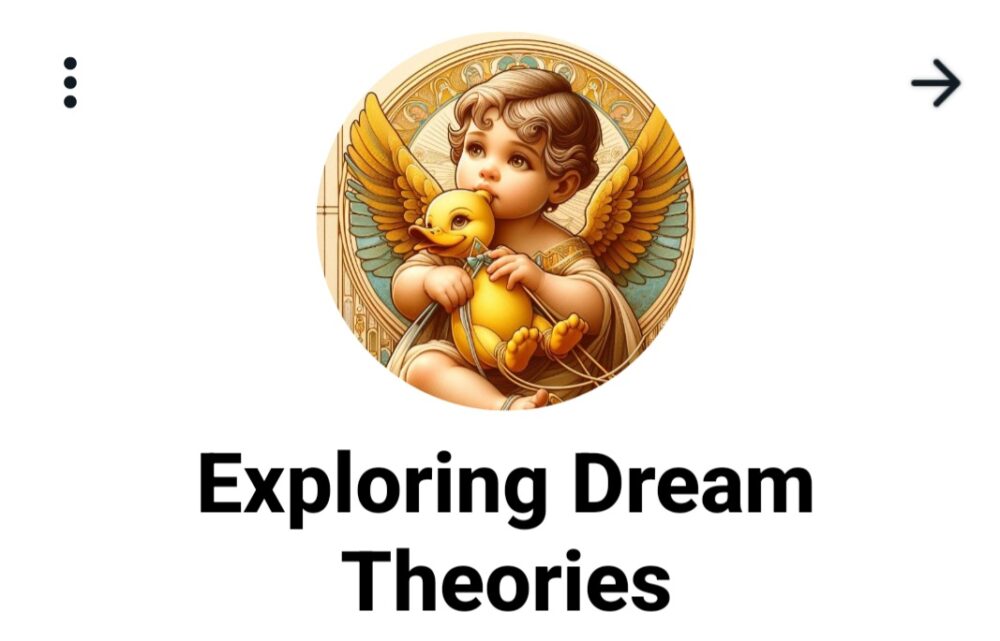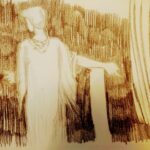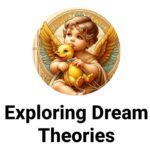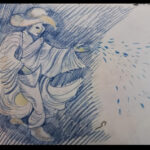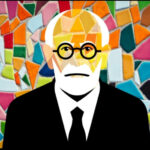Exploring the Nexus between Dreams and Delirium
The fascinating intersection of dreams and delirium has been a subject of extensive research, emphasizing the parallels between the two phenomena. Esteemed scholars, including Sigmund Freud, have drawn comparisons, suggesting that understanding the mechanisms underlying dreams could shed light on the nature of psychosis.
- Freud’s Psychodynamic Theory: Sigmund Freud posited that dreams and psychotic symptoms could be understood through a common framework of wish fulfillment and the breakdown of the boundary between the unconscious and conscious mind[1]. Dreams serve as a window into the unconscious, where repressed desires surface in a symbolic form, a process not unlike the manifestations of psychosis, where distorted reality and unconscious content merge into conscious experience.
Carl Jung, a Swiss psychiatrist and psychoanalyst who founded analytical psychology, offers a profound perspective on dreams and psychosis that enriches our understanding beyond the traditional Freudian interpretation. Jung viewed dreams not merely as personal expressions of unconscious desires but as manifestations of the collective unconscious—a repository of universal archetypes and symbols shared among all humans. His ideas extend into the understanding of psychosis, emphasizing the symbolic and meaningful aspects of these experiences.
Jung on Dreams
Jung proposed that dreams serve as a bridge between the conscious and the unconscious mind, facilitating the process of individuation—the psychological development of the integrated self[1]. He believed that dreams are purposive and compensatory, aiming to restore psychological balance by providing messages and symbols that the conscious mind may be ignoring or repressing. Unlike Freud, who focused on the wish-fulfilling aspect of dreams, Jung saw them as reflective of the entire psyche, including both personal and collective unconscious elements.
Jung introduced the concept of archetypes—innate, universal symbols such as the anima and animus, the shadow, and the Self. These archetypes manifest in dreams, providing insights into an individual’s psychological state and the universal human experience[2].
Jung on Psychosis
Jung’s work with psychotic patients led him to view psychosis not merely as a set of symptoms to be treated but as a significant, albeit pathological, attempt by the psyche to heal itself[3]. He observed that the delusions and hallucinations experienced by psychotic individuals often contained symbolic material similar to the archetypes found in dreams. Jung theorized that, in psychosis, there is an overwhelming influx of content from the collective unconscious into consciousness, which the individual is unable to integrate, leading to a disconnection from reality.
For Jung, the content of psychotic episodes could potentially hold meaning and purpose, reflecting deep-seated psychological conflicts and attempts at resolution. He suggested that understanding and integrating the symbolic content of psychosis could be therapeutic, a process he termed “psychic rehabilitation.”[4].
Implications and Contemporary Relevance
Jung’s perspectives on dreams and psychosis highlight the importance of symbolic understanding and the therapeutic potential of engaging with the unconscious. His work has influenced contemporary psychotherapy, particularly in approaches that value the exploration of dreams and the use of creative and symbolic methods in treating psychosis, such as art therapy and narrative therapy[5].
Jung’s ideas also resonate with modern research into the therapeutic potential of psychedelics, which can induce states similar to dreaming and psychosis, facilitating profound psychological insights and emotional healing[6]. Studies on psychedelics often report experiences rich in symbolic and archetypal content, suggesting a Jungian framework might offer valuable insights into their therapeutic mechanisms[7].
Jung’s contributions provide a rich, symbolic lens through which to view dreams and psychosis, offering pathways to understanding and healing that transcend conventional psychiatric models. His work underscores the potential of the human psyche to convey universal truths and the importance of attending to the symbolic and archetypal dimensions of our experiences.
John Allan Hobson, a Harvard psychiatrist and a leading figure in sleep research, has been a vocal critic of Freud’s interpretation, challenging the notion that dreams carry inherent meaning. Despite his skepticism, Hobson’s work has significantly contributed to our understanding of dreams, as detailed in his seminal work, “Dreaming as Delirium: How the Brain Goes Out of Its Mind” (1994). Here, Hobson likens dreaming to the disorganized and hallucinatory states of delirium, distinct from the structured delusions often associated with psychosis. This distinction highlights the unstructured nature of dreaming, aligning more closely with Hobson’s perspective against Freud’s theory.
- Activation-Synthesis Hypothesis: Proposed by Allan Hobson and Robert McCarley, this hypothesis suggests that dreams result from the brain’s attempt to make sense of random neural activity during REM sleep[2]. This model parallels certain psychotic states, particularly in conditions like schizophrenia, where disordered thinking may arise from the brain’s attempt to ascribe meaning to internal stimuli without external inputs.
The link between dreams and delirium is exemplified by the “delirium tremens” experienced during alcohol withdrawal, highlighting how substance effects on the brain can induce dream-like hallucinations. This condition and the suppression of REM sleep by alcohol consumption underscore the physiological aspects of dreaming. Moreover, the dominance of biological perspectives in dream research, especially studies on animal sleep and dreaming, has historically downplayed the significance of dreams. These perspectives were primarily based on the understanding that dreams originate from the brain’s primitive centers, implying a lack of meaningful content.
“Delirium tremens” is a severe form of alcohol withdrawal characterized by sudden and severe changes in your mental state or nervous system after stopping or significantly reducing heavy and prolonged alcohol use. To extend the notion of “delirium tremens,” we can explore its symptoms, causes, treatment, and implications for understanding addiction and withdrawal in a broader context.
The hallmark symptoms of “delirium tremens” include severe confusion, agitation, a rapid heartbeat, high blood pressure, fever, and hallucinations. These symptoms can be terrifying, not just for the person experiencing them but also for those around them. Hallucinations can be visual, auditory, or tactile and are often vivid and distressing.
“Delirium tremens” is primarily caused by the abrupt cessation of alcohol intake in individuals with a history of heavy alcohol use over months or years. Alcohol has a depressive effect on the brain, and over time, the brain adjusts its chemistry to compensate for the constant presence of alcohol. When alcohol is suddenly removed, the brain remains in a hyperactive state, leading to the symptoms of withdrawal.
Treatment for “delirium tremens” often requires hospitalization and may include the use of benzodiazepines to reduce withdrawal symptoms, antipsychotics for severe agitation or hallucinations, and other supportive measures such as hydration and correction of electrolyte imbalances. The goal is to stabilize the patient, reduce symptoms, and prevent further complications.
However, the tide began to turn in the 1990s, with researchers like Mark Solms of the University of Cape Town providing evidence of higher brain centers’ involvement in dreaming. This revelation, coupled with the role of dopamine in dreaming, suggests a deeper, motivational aspect to dreaming, challenging the view that dreams are merely random brain activities. Solms’ research, along with the observed effects of dopamine-enhancing drugs on dream intensity, has reignited the debate on the significance of dreams, suggesting they are an essential aspect of human cognition and motivation.
Solms’ groundbreaking work, alongside the dopamine-enhancing effects of certain medications, underscores the motivational aspects of dreaming. This research challenges previous assumptions, suggesting that dreams do have profound significance and are intricately linked to our motivational systems.
Empirical Research
- Neurobiological Studies: Research has shown that both dreaming and psychosis involve alterations in neurotransmitter systems, particularly dopamine and serotonin[3]. For instance, elevated dopamine levels have been implicated in the vivid imagery of dreams and the hallucinations and delusions characteristic of psychosis. This suggests a neurochemical basis for the similarities between dreaming and psychotic experiences.
- Functional Brain Imaging: Studies using fMRI and PET have observed that certain brain regions, including the prefrontal cortex, thalamus, and limbic system, show altered activity during both dreaming and psychotic episodes[4]. These findings support the idea that changes in brain function during sleep might mirror those observed in psychosis, offering insights into the disrupted reality testing evident in both states.
Clinical Implications
- Understanding Psychosis: By studying dream processes, researchers can gain insights into the mechanisms of psychosis, particularly how the brain constructs and deconstructs reality. This understanding could inform therapeutic strategies that target the cognitive and neurobiological underpinnings of psychotic disorders.
- Therapeutic Approaches: Knowledge of the shared mechanisms between dreaming and psychosis can lead to innovative treatments, such as cognitive-behavioral therapies that address the content and structure of both dreams and delusional thoughts. Moreover, understanding the role of neurotransmitters in dreams could guide pharmacological interventions to balance these chemicals in psychotic patients[5].
This expanded discussion underscores the significant overlap between the mechanisms underlying dreams and psychosis, suggesting that further research in this area could offer valuable insights into the nature and treatment of psychotic disorders. By bridging theoretical and empirical domains, the field can advance toward a more nuanced understanding of mental health and illness.
Delirium, psychosis, and psychedelic states are distinct mental states that exhibit both overlapping and unique characteristics..
Delirium
Definition: Delirium is a rapid-onset, fluctuating disturbance of attention, awareness, and cognition, often resulting from an underlying medical condition, substance intoxication or withdrawal, or medication side effect[1].
Characteristics:
- Rapid onset and fluctuating course
- Impaired attention and awareness
- Disorganized thinking, perceptual disturbances
- Potential reversible cause
Underlying Mechanisms: Imbalances in neurotransmitters, particularly acetylcholine and dopamine, as well as inflammation and metabolic disturbances, are often implicated[2].
Psychosis
Definition: Psychosis is characterized by a disconnection from reality, manifesting as delusions, hallucinations, disorganized thinking, and speech, often occurring within the context of disorders like schizophrenia[3].
Characteristics:
- Hallucinations and delusions
- Disorganized thought and speech
- Can be chronic or episodic
- Associated with various psychiatric disorders
Underlying Mechanisms: Dysregulation of dopamine, glutamate, and other neurotransmitter systems in various brain regions, including the prefrontal cortex and limbic system, are key factors[4].
Psychedelic States
Definition: Psychedelic states are induced by substances such as LSD, psilocybin, and MDMA, characterized by altered perception, mood, and thought, often with enhanced introspection and sensory distortion[5].
Characteristics:
- Altered sensory perception and cognitive processes
- Enhanced emotional and introspective experiences
- Ego dissolution and altered sense of time and space
- Generally induced by specific substances
Underlying Mechanisms: Primarily mediated by serotonin 2A receptor agonism, affecting neural circuits that alter consciousness and perception[6].
Similarities
- Altered Perception and Cognition: All three states involve alterations in perception, cognition, and awareness, albeit with different manifestations and durations.
- Neurotransmitter Dysregulation: Neurotransmitter imbalances play a role in each state, with specific mechanisms varying according to the condition or substance[2][4][6].
Differences
- Etiology and Onset: Delirium often results from acute medical conditions or substance withdrawal, psychosis is usually related to psychiatric disorders, and psychedelic states are substance-induced.
- Awareness and Insight: Patients with delirium often have impaired awareness and fluctuating symptoms, those with psychosis may lack insight into their condition, while individuals in psychedelic states usually retain awareness that their experiences are drug-induced.
- Duration and Reversibility: Delirium is typically transient and reversible with treatment of the underlying cause, psychosis can be chronic or episodic with variable responsiveness to treatment, and psychedelic states are generally short-lived, ending as the substance’s effects wear off.
- Treatment and Management: Management of delirium focuses on treating the underlying cause and symptomatic care, psychosis treatment includes antipsychotic medications and psychotherapy, and interventions for adverse psychedelic states involve supportive care and, in some cases, the use of antipsychotics or benzodiazepines[7].
This comparison underscores the importance of contextualizing each state within its clinical framework, recognizing both shared and distinct elements that contribute to our understanding of altered mental states and guiding appropriate therapeutic interventions.
Comparing dreaming to virtual reality (VR) involves exploring the similarities and differences between the natural, cognitive process of dreaming and the technologically mediated experience of VR. Both realms offer immersive experiences that can evoke strong emotional responses, alter perceptions of reality, and influence learning and memory. However, they also fundamentally differ in their origins, control mechanisms, and interactive capacities. This comparison integrates insights from psychology, neuroscience, and technology studies.
Similarities
- Immersive Experience: Both dreaming and VR create immersive experiences that can engage the senses deeply. In dreams, this immersion is generated internally by the brain during sleep, creating vivid experiences that can range from mundane to surreal[1]. Similarly, VR uses technology to create immersive digital environments that users can interact with, often leading to intense emotional and sensory experiences[2].
- Altered Perception of Reality: Dreaming and VR can alter perceptions of reality, transcending the limitations of the physical world. Dreams can defy logic and physical laws, offering experiences that are impossible in waking life[3]. VR, through its design, allows users to experience environments and scenarios that may be unrealistic, dangerous, or inaccessible in real life[4].
- Emotional and Cognitive Impact: Both experiences can have significant emotional and cognitive impacts. Dreams have been shown to influence mood, creativity, problem-solving abilities, and even the processing of emotional traumas[5]. Similarly, VR has been utilized in psychological therapy, education, and training, demonstrating its potential to affect learning, emotional responses, and behavior[6].
Differences
- Agency and Control: One of the most significant differences lies in the degree of agency and control. In dreams, individuals often lack conscious control over the unfolding scenarios, with the dream content being largely generated by subconscious processes[7]. In contrast, VR experiences are designed and controlled externally, with users typically having some degree of agency within the virtual environment, depending on the software’s design[8].
- Sensory Input and Realism: While both dreams and VR can produce realistic sensations, VR relies on external devices (headsets, gloves, etc.) to simulate sensory inputs, which can vary in their degree of realism and immersion. Dreams, on the other hand, are entirely generated by the brain, creating sensory experiences that are not bounded by current technological limitations[9].
- Creation and Design: Dreams are a natural cognitive and psychological phenomenon, influenced by an individual’s experiences, thoughts, and emotions[10]. VR environments, however, are created through software and hardware, designed by developers to elicit specific experiences or responses. The content of VR is thus limited by current technology and the creators’ imagination and skill[11].
- Purpose and Application: The purpose and application of dreaming and VR can differ markedly. Dreams play a role in memory consolidation, emotional processing, and the rehearsal of evolutionary significant scenarios[12]. VR, created for entertainment, education, training, and therapeutic purposes, serves more explicit and varied objectives determined by the users and creators[13].
By comparing dreaming to virtual reality, we can appreciate the richness and complexity of human experience, whether generated internally by our minds or externally through technology. Each offers unique insights into perception, reality, and the potential for altering human experience and understanding.
Sigmund Freud, the founding father of psychoanalysis, profoundly influenced our understanding of dreams, psychosis, and altered states of consciousness. His theories, primarily articulated in his seminal works such as “The Interpretation of Dreams” (1900) and later writings on psychopathology, provide a framework for interpreting these phenomena through the lens of psychoanalytic theory.
Freud on Dreams
Freud considered dreams to be the “royal road to the unconscious,” a means for repressed desires and unconscious thoughts to be expressed symbolically. In “The Interpretation of Dreams,” Freud introduces the concept of dream work, a process involving condensation, displacement, and the transformation of latent dream thoughts into manifest content[1]. Dreams, according to Freud, serve the primary function of wish fulfillment, allowing the dreamer to experience the fulfillment of repressed desires in a disguised form.
Freud on Psychosis
Freud’s perspective on psychosis is intertwined with his broader theories of neurosis and psychopathology. In works such as “The Neuro-Psychoses of Defence” (1894), he suggests that psychosis arises from a failure in the mechanism of repression, leading to a withdrawal from reality and the replacement of the external world with a delusional one[2]. Freud proposed that, similar to dreams, psychotic symptoms such as hallucinations and delusions are symbolic expressions of unconscious conflicts but occur in the waking state and are mistakenly perceived as reality.
Freud on Altered States
Although Freud’s direct commentary on altered states of consciousness outside of dreams and psychosis is more limited, his theoretical constructs on the unconscious, repression, and the pleasure principle provide a foundation for understanding such states. His early work with psychoactive substances, notably his exploration of the effects of cocaine, reflects an interest in how these substances might affect mental processes and potentially offer therapeutic benefits[3]. Freud’s ideas suggest that altered states, like dreams, might offer insight into the unconscious mind, though he emphasized the potential dangers of reliance on substances for escape or insight.
Implications and Contemporary Relevance
Freud’s theories laid the groundwork for psychoanalytic and psychodynamic approaches to understanding and treating mental disorders. His ideas on dreams have influenced countless therapeutic practices aimed at uncovering unconscious material through dream analysis. Similarly, his views on psychosis have shaped early psychoanalytic approaches to schizophrenia and other severe mental illnesses, emphasizing the role of internal conflict and early life experiences.
Though some of Freud’s specific hypotheses have been critiqued or revised in light of modern neuroscience and psychology, his pioneering work on the importance of the unconscious mind in shaping human behavior and experience remains influential. Contemporary research in psychology and psychiatry continues to explore the complex interplay between unconscious processes, dreams, and altered states of consciousness, often echoing themes found in Freud’s work.
Freud’s contributions continue to serve as a vital reference point for discussions on the nature of dreams, the mechanisms underlying psychosis, and the exploration of altered states of consciousness, providing a rich, albeit sometimes controversial, framework for understanding the depths of the human psyche.
R.D. Laing: A Revolutionary Approach to Psychosis and Consciousness
R.D. Laing, the Scottish psychiatrist, emerged as a pivotal figure in the 1960s, revolutionizing the perception of psychosis with his radical insights. His approach, deeply rooted in existential and phenomenological philosophy, shifts the focus from pathology to the rich tapestry of lived experience. Laing’s landmark publications, including “The Divided Self” (1960) and “Sanity, Madness and the Family” (1964, co-authored with Aaron Esterson), critique traditional psychiatric paradigms, proposing instead a compassionate understanding of psychosis.
Laing on Dreams and Altered Consciousness
Though not primarily focused on dreams, Laing delved into the dream-like quality of altered consciousness in psychosis, positing that such experiences, within their existential context, could hold coherence and significance akin to dreams. This perspective suggests that both dreams and psychotic states may unveil profound existential realities and personal struggles.
Significance in Psychosis Understanding
Laing’s most notable contributions lie in his interpretation of psychosis, especially schizophrenia, as not merely an ailment but a meaningful response to overwhelming life crises. He viewed symptoms often labeled as psychotic as expressive efforts to navigate and communicate within a fragmented reality and self. Emphasizing the value of empathizing with patients’ subjective experiences, Laing advocated for recognizing the potential within psychotic episodes for personal growth and healing.
Exploration of Consciousness
Intrigued by altered states, Laing explored the therapeutic potentials of LSD and other psychedelics in inducing consciousness states that offer insights into self and others. He believed these substances could simulate psychosis, providing a glimpse into patient experiences and aiding in therapeutic advancements.
Legacy and Influence
Laing’s humanistic approach and exploration into altered states precede and influence contemporary psychotherapeutic practices, emphasizing empathy, the therapeutic relationship, and subjective experience exploration. His pioneering work continues to resonate, particularly his early explorations into the therapeutic use of psychedelics, now mirrored in modern psychedelic-assisted psychotherapy research.
Ludwig Binswanger: Existential Analysis of Dreams and Psychosis
Ludwig Binswanger, a Swiss psychiatrist and existential psychology pioneer, diverged from traditional psychoanalytic methods, focusing on the individual’s subjective experience and existence. His seminal work, “Traum und Existenz” (Dream and Existence), introduced by Michel Foucault to a French audience, explores dreams through an existential lens, positing them as expressions of existential concerns rather than mere wish fulfillment or symbolic content.
Existential Approach to Psychosis
Binswanger’s existential-analytical framework views psychosis as an alteration in the individual’s Dasein, leading to a distinct perception and engagement with reality. His detailed case studies, such as Ellen West’s analysis, reveal the existential themes within psychotic experiences, emphasizing understanding them within the individual’s unique existential context.
Altered States and Existential Insights
While not explicitly focusing on altered states, Binswanger’s existential framework sheds light on these experiences as variations in being-in-the-world, revealing underlying existential concerns and transformation opportunities.
Contemporary Relevance and Impact
Binswanger’s work influences existential therapy, humanistic psychology, and phenomenological psychiatry approaches, advocating for a focus on understanding patients’ lived experiences and addressing underlying existential issues.
Jean-Paul Sartre: Existential Perspectives on Consciousness
Jean-Paul Sartre, the French existentialist philosopher, provided profound insights into consciousness, freedom, and existence, significantly influencing psychology and psychoanalysis. In “The Imaginary,” Sartre examines imagination and dreaming as forms of consciousness that transcend real-world constraints, offering freedom for mental exploration.
Application to Psychosis and Altered States
Sartre’s exploration of existential freedom and authenticity offers a lens through which to understand the existential underpinnings of psychotic experiences. His firsthand experiences with hallucinogens informed his philosophical considerations of consciousness, imagination, and the self-other boundary.
Influence on Existential Psychotherapy
Sartre’s exploration of existential angst and the search for meaning has deeply influenced existential psychotherapy, emphasizing the individual’s responsibility in creating their essence through lived experiences.
Conclusion
The works of R.D. Laing, Ludwig Binswanger, and Jean-Paul Sartre challenge traditional perceptions of dreams, psychosis, and altered states, advocating for a nuanced understanding that emphasizes the significance of subjective experience and existential concerns. Their contributions continue to inspire and influence contemporary approaches to mental health, psychotherapy, and the exploration of consciousness.
1. American Psychiatric Association. (2013). Diagnostic and Statistical Manual of Mental Disorders (5th ed.). DSM-5.
2. Barrett, D. (1996). Dreams and creativity. Psychiatry: Interpersonal and Biological Processes.
3. Binswanger, L. (1963). Being-in-the-World: Selected Papers of Ludwig Binswanger. Translated by Jacob Needleman. New York: Basic Books.
4. Binswanger, L. (1993). “Dream and Existence”. In Michel Foucault, Dream and Existence, edited by Keith Hoeller, Atlantic Highlands, NJ: Humanities Press.
5. Blagrove, M., & Hartnell, S. J. (2000). Lucid dreaming: Associations with internal locus of control, need for cognition and creativity. Personality and Individual Differences.
6. Burdea, G. C., & Coiffet, P. (2003). Virtual Reality Technology. John Wiley & Sons.
7. Carhart-Harris, R. L., & Goodwin, G. M. (2017). The therapeutic potential of psychedelic drugs: Past, present, and future. Neuropsychopharmacology.
8. Freud, S. (1884). Über Coca (On Coca). Centralblatt für die ges. Therapie.
9. Freud, S. (1894). The Neuro-Psychoses of Defence. Standard Edition, Vol. 3. London: The Hogarth Press.
10. Freud, S. (1900). The Interpretation of Dreams. Standard Edition, Vol. 4 and 5. London: The Hogarth Press.
11. Freud, S. (1900). The Interpretation of Dreams. The Hogarth Press and the Institute of Psycho-Analysis.
12. Gaggioli, A., et al. (2014). Virtual Reality as a Tool for Delivering PTSD Exposure Therapy and Stress Resilience Training. Military Behavioral Health.
13. Grob, C. S., et al. (2011). Pilot study of psilocybin treatment for anxiety in patients with advanced-stage cancer. Archives of General Psychiatry.
14. Hobson, J. A. (2009). REM sleep and dreaming: Towards a theory of protoconsciousness. Nature Reviews Neuroscience.
15. Hobson, J. A., & McCarley, R. W. (1977). The brain as a dream state generator: An activation-synthesis hypothesis of the dream process. American Journal of Psychiatry.
16. Holzhey-Kunz, Alice. (1994). Daseinsanalyse und psychoanalytische Psychotherapie: Ein Vergleich zwischen Binswanger und Freud. Bern: Verlag Hans Huber.
17. Howes, O. D., & Kapur, S. (2009). The dopamine hypothesis of schizophrenia: Version III—The final common pathway. Schizophrenia Bulletin.
18. Javitt, D. C., & Zukin, S. R. (1991). Recent advances in the phencyclidine model of schizophrenia. American Journal of Psychiatry.
19. Jung, C.G. (1958). Psychology and Religion: West and East. Collected Works of C.G. Jung, Volume 11. New Haven, CT: Yale University Press.
20. Jung, C.G. (1959). The Archetypes and the Collective Unconscious. Collected Works of C.G. Jung, Volume 9 (Part 1). Princeton, NJ: Princeton University Press.
21. Jung, C.G. (1960). The Psychogenesis of Mental Disease. Collected Works of C.G. Jung, Volume 3. Princeton, NJ: Princeton University Press.
22. Jung, C.G. (1964). Man and His Symbols. London: Aldus Books.
23. Kapur, S. (2003). Psychosis as a state of aberrant salience: A framework linking biology, phenomenology, and pharmacology in schizophrenia. American Journal of Psychiatry.
24. LaBerge, S. (1985). Lucid Dreaming: The Power of Being Awake and Aware in Your Dreams. Jeremy P. Tarcher, Inc.
25. Laing, R.D. (1960). The Divided Self: An Existential Study in Sanity and Madness. Tavistock Publications.
26. Laing, R.D. (1967). The Politics of Experience and The Bird of Paradise. Penguin Books.
27. Laing, R.D., & Esterson, A. (1964). Sanity, Madness and the Family: Families of Schizophrenics. Penguin Books.
28. Maldonado, J. R. (2008). Neuropathogenesis of delirium: Review of current etiologic theories and common pathways. American Journal of Geriatric Psychiatry.
29. Maquet, P. et al. (1996). Functional neuroanatomy of human rapid-eye-movement sleep and dreaming. Nature.
30. Nichols, D. E. (2016). Psychedelics. Pharmacological Reviews.
31. Revonsuo, A. (2000). The reinterpretation of dreams: An evolutionary hypothesis of the function of dreaming. Behavioral and Brain Sciences.
32. Riva, G., Mantovani, F., & Capideville, C. S. (2007). Presence and rehabilitation: Toward second-generation virtual reality applications in neuropsychology. Journal of NeuroEngineering and Rehabilitation.
33. Rizzo, A. S., & Kim, G. J. (2005). A SWOT analysis of the field of virtual reality rehabilitation and therapy. Presence: Teleoperators and Virtual Environments.
34. Sartre, J.-P. (1940). The Imaginary: A Phenomenological Psychology of the Imagination. Routledge.
35. Sartre, J.-P. (1943). Being and Nothingness: An Essay on Phenomenological Ontology. Routledge.
36. Sartre, J.-P. (1971). The Psychology of Imagination. Washington Square Press.
37. Sessa, B. (2012). The Psychedelic Renaissance: Reassessing the Role of Psychedelic Drugs in 21st Century Psychiatry and Society. Muswell Hill Press.
38. Slater, M., & Sanchez-Vives, M. V. (2016). Enhancing Our Lives with Immersive Virtual Reality. Frontiers in Robotics and AI.
39. Solms, M. (1997). Dreaming and REM sleep are controlled by different brain mechanisms. Behavioral and Brain Sciences.
40. Stevens, A. (1994). Jung and the Post-Jungians. London: Routledge.
41. Stickgold, R., & Walker, M. P. (2013). Memory consolidation and reconsolidation: What is the role of sleep? Trends in Neurosciences.
42. Steuer, J. (1992). Defining Virtual Reality: Dimensions Determining Telepresence. Journal of Communication.
43. Yalom, I. D. (1980). Existential Psychotherapy. Basic Books.
